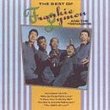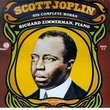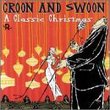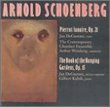| All Artists: Bach, Milstein Title: Sonatas for Solo Violin Members Wishing: 2 Total Copies: 0 Label: EMI Classics Original Release Date: 1/1/1954 Re-Release Date: 2/13/2001 Album Type: Original recording remastered Genre: Classical Styles: Chamber Music, Historical Periods, Baroque (c.1600-1750), Classical (c.1770-1830), Modern, 20th, & 21st Century, Instruments, Strings Number of Discs: 1 SwapaCD Credits: 1 UPCs: 724356686922, 724356686953 |
Search - Bach, Milstein :: Sonatas for Solo Violin
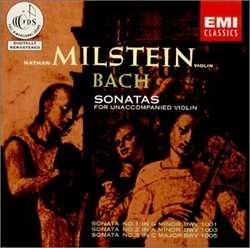 | Bach, Milstein Sonatas for Solo Violin Genre: Classical
|
Larger Image |
CD DetailsSimilarly Requested CDs
|
CD ReviewsThe deepest insights into Bach Peter Lavezzoli | Ft. Lauderdale, FL USA | 05/16/2005 (5 out of 5 stars) "Bach is my favorite composer, and of all Bach's works, the Goldberg Variations, and these solo violin sonatas/partitas, are my "desert island" works. I've listened to many recordings of these sonatas/partitas, from Yehudi Menuhin to Jascha Heifetz, Grumiaux, Perlman, Podger, and others. Milstein's survey from the 1950s on EMI stands as my favorite, in comparison with his DG rendition in the 1970s. I had a conversation with one of the editors of the Penguin guide about these recordings, and Milstein was also his favorite, but he preferred the 70s DG version for reasons of sound quality and technical brilliance. I countered that the EMI Milstein set from the 50s was superior for the depth of insight brought to these pieces. Nathan Milstein was in his absolute prime when he first recorded this survey in the 50s. His insights into Bach are pure, with the required delicacy in slow movements, the right touch of silence here and there to let the music breathe, without being CONSPICUOUSLY slow, such as the Perlman set, which tends to drag at times. His fugues are perfectly light on their feet, his rhythms perfectly sprung, without making it a horse race. In short, Milstein stays out of the way of Bach in every moment of the EMI set, and we are face to face with the composer. But in the DG set from the 1970s, Milstein seems to be rushing through some passages (as does Grumiaux), with more regard for "technical brilliance" as the Penguin editor cited, instead of pure musicality and reverence of Bach. I have listened to both Milstein versions, and the 70s DG recording simply does not reach down into the depths of Bach in the same way. The Jascha Heifetz rendition is also outstanding, but when you listen to it, you know that it's about Heifetz, not so much about Bach. Now, Heifetz was indeed the best of the best, in terms of his technical mastery. The one segment where Heifetz wins me over from everyone else is in the mighty Chaconne from Partita 2. In this Mount Everest of solo violin, Heifetz takes you on an exhilarating ride that leaves you speechless. I have never heard the Chaconne played with such fearless power and confidence than from Heifetz. For that one segment alone, I bow to him above all others. He was indeed the best. But Heifetz himself always heaped praise upon Nathan Milstein, which was exceedingly rare. Heifetz never praised anyone! Heifetz always demanded that his students go to see Milstein perform. If his students didn't go, they'd be in trouble! So Milstein certainly commanded a great deal of respect from Heifetz. And when you hear Milstein play the mighty Chaconne, he almost has the supreme technical mastery of Heifetz. Not quite, but almost. However, once again, when you hear the Heifetz version, you are hearing Heifetz, the master. When you hear the (50s EMI) Milstein version, you are hearing Bach. I invite the listener to compare one specific movement between these two Milstein versions, and then make their own decision. Listen very carefully to the opening Grave movement from Sonata 2 in A Minor. Compare and contrast the depth of insight in the 50s version on EMI, and the 70s version on DG. You will most likely come to the same conclusion as I did after making my own comparison. Then compare other movements throughout the set, but start with that one. For me, there is no doubt. The 50s set is pure, unadulterated Bach at its finest. No other violinist came closer to the heart of this beautiful music than Milstein did in the 1950s. Even HE didn't get as close to it when he remade this music later in his life. And by the way, in terms of sound quality, this EMI set from the 50s is perfect! There is no cavernous reverb, just the pure unadulterated sound of Milstein's violin, so clean and clear that he is right there in the room with you. The two words I always come away with after listening to this 50s Milstein set on EMI are "intimacy" and "insight."" Milstein is a master Peter Mac Arthur | Oregon | 12/07/2001 (5 out of 5 stars) "This recording not only demonstrates mastery over an instrument but also clearly demonstrates Bach's genius. A just plain wonderful pair Bach and Milstein. These mid 50's recordings are a must for lovers of true sonic beauty." Earlier 1954 and 1956 versions DKDC | Washington, DC USA | 12/19/2004 (5 out of 5 stars) "Supposedly the 1975 versions (includes partitas in the 2 cd set on DG) were better in Milstein's judgment. I think they are both amazing."
|

 Track Listings (13) - Disc #1
Track Listings (13) - Disc #1
